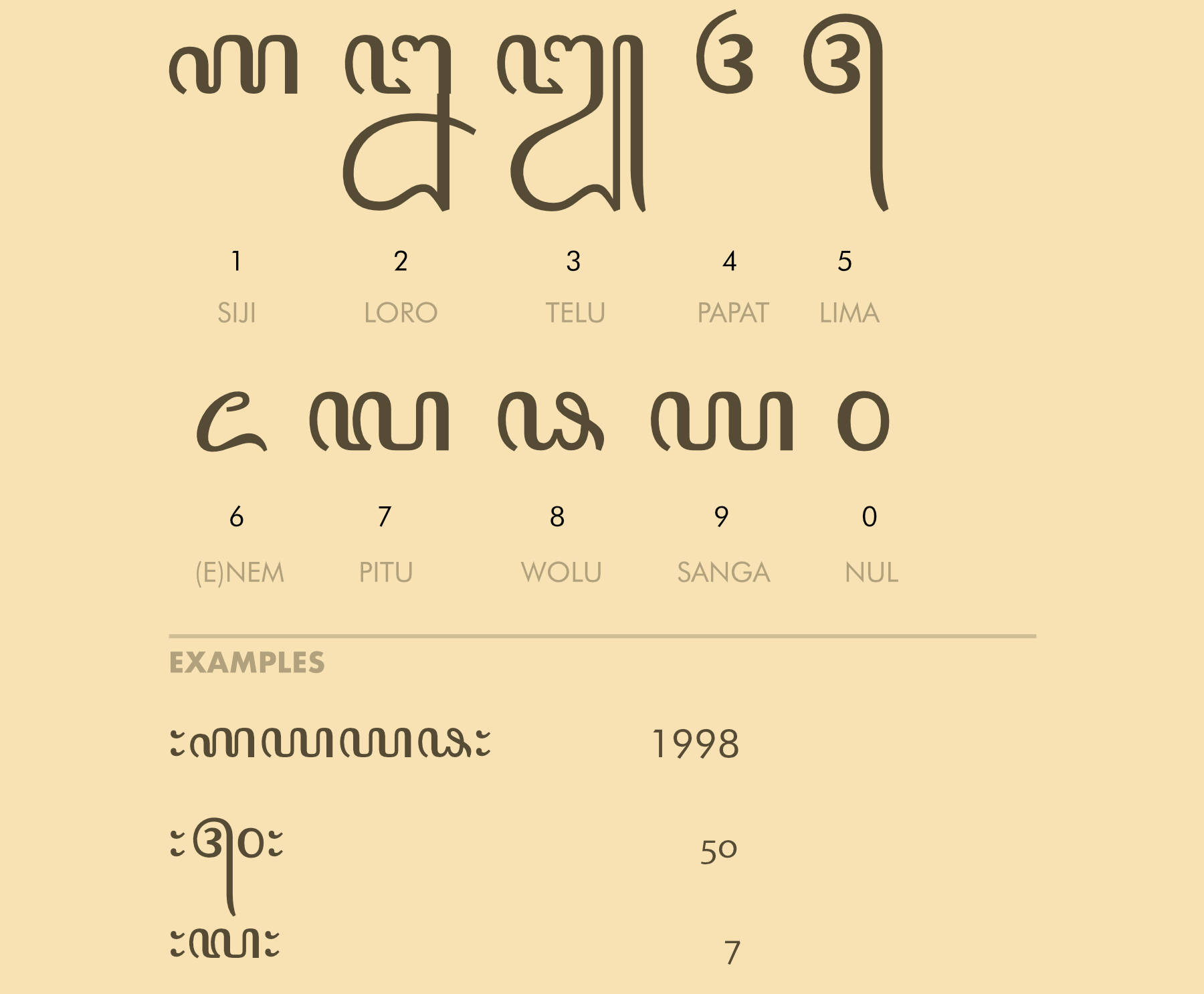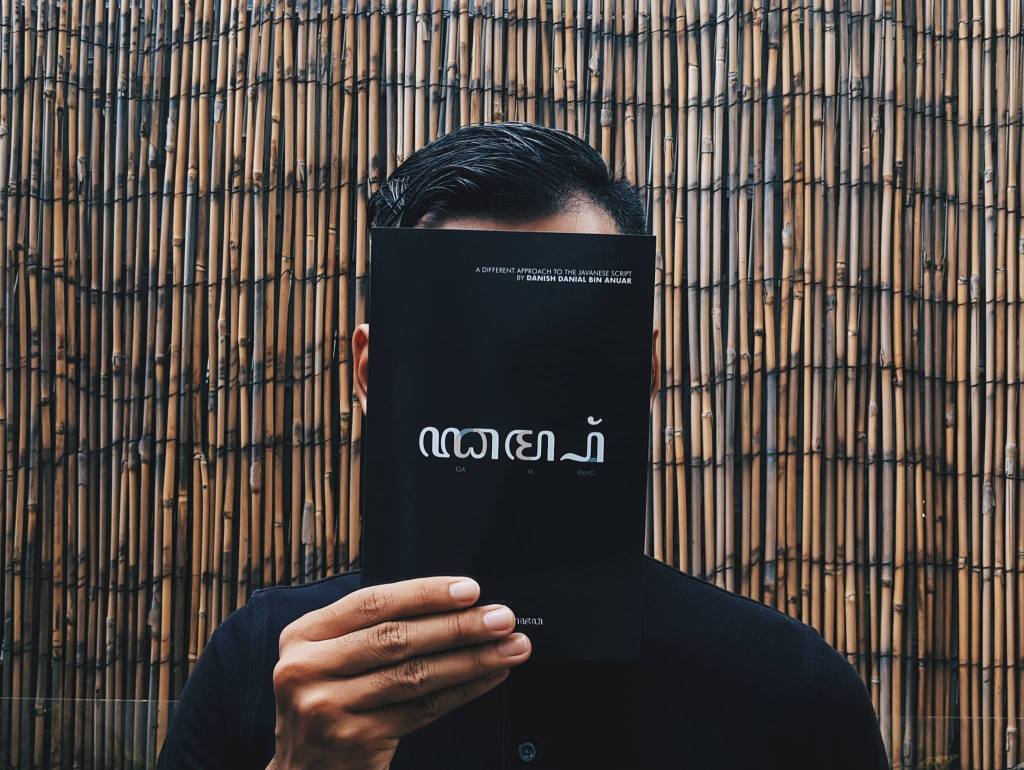Introduction
The Javanese script, or the Aksara Jawa, is a modern variant of the Brahmic Kawi script developed in Java in the 9th century. By the 17th century, the script is formed into the script that we see today. Due to a number of factors, since the 19th Century, the use of the Javanese script faced a decline, to be replaced by the Latin script. There have been numerous efforts to revive its use since then. Currently, the Javanese script is widely used for decorative or sholarly purposes. However, it is also noticeably used on a day-to-day basis occasionally as well. Personally, I have never been to Yogyakarta or Surakarta, Indonesia, however, if you were to look at a number of photos, you’ll be able to see the script’s use on street signs and on some notices. I have been to Bali though, and the interesting fact is that once you are used to the Javanese script, it’s pretty easy to pick up the Balinese script. Thus far, I have not seen many English tutorials on the Javanese script and that’s my main purpose of writing this post. Hopefully, one way or another, this will help those who are interested in learning more about the script and also contribute to the preservation of this aspect of Javanese culture.
I’m splitting this post up to 8 different sections: Consonants, Capital Letters, Pure Vowels, Loan Letters, Diacritics, Special Letters, Numerals, and finally, Punctuation. I’ve arranged them in a way such that it’s easier for you to learn with the more important sections and concepts at the front.
Also, a really quick way for you to pick up this script is getting a pen and paper and writing down the letters repeatedly. Either that, or learn how to write your name in the script itself.
Some things to be mindful of:
- The Javanese script is written in Scriptio Continua. Just like other Brahmic scripts such as Thai, Burmese, or Lao, there are no spaces in between letters.
- To give you an idea of what Javanese script is like in general, basically, letters and vowels can appear in the middle, the top, and at the bottom of the script.
- All of the consonants by default end with an “a”.
Consonants (Wyanjana/ꦮꦾꦤ꧀ꦗꦤ)
Aksara (Root Consonants)
Let’s start off with the main letters or consonants of the script. We call the root consonants or the letters in the middle as Aksara. An example of a consonant is ꦲ (Ha). We’ll be playing a lot of ꦲ (Ha) throughout the post.
Pasangan (Connecting Form)
The pasangan is a modified form of the main Aksara, and is formed when the previous consonant ends without without a vowel or with a Pangkon (꧀). A Pangkon is a device that removes the “a” after a consonant. As mentioned previously, be default, all consonants end with an “a”. The pasangan can be located in the middle or the bottom of the script.
For example, the pasangan form of ꦲ (Ha) can be located on the second character ꦲ꧀ꦲ (Hha).
ꦲ + ꧀ + ꦲ = ꦲ꧀ꦲ
A Word about Noto Sans
Basically, the characters above are written in the default Google Noto Sans font (as of 2019 since fixes are being made). They have simplified the way the Javanese script looks like digitally from actual written forms by removing the front part of the characters. Don’t be surprised if some of the characters look different digitally.

Overview
So here is an overview of the consonants together with their pasangans in red. Throughout the entire post, pasangans will always be in red.

Capital Letters (Murda/ꦩꦸꦂꦢ)
The Javanese script is a weird world of exceptions. Capital Letters only apply to certain letters of the script, and there are only about 8 that you’ll have to memorize.
Murda are mainly used in names or foreign words, and do take note that they are not always placed at the front of a given word. They are only placed at the front of the word if the Capital Letter is available for that first letter. Otherwise, it will be used for the second letter. If the Capital Letter for the second letter is not available, it will be used for the third and so forth. If none of the letters are eligible to be converted to the Murda form, then there will be no Captial Letters used for that word. Murda letters are not allowed to end off with a pangkon (꧀).
Overview

Pure Vowels (Swara/ꦱ꧀ꦮꦫ)
Swara are normally used for foreign words or names, similar in the case with Murda. The good news is that Swara letters do not have pasangans.

Loan Letters (Rekan/ꦫꦺꦏꦤ꧀)
Rekan are letters that are used for words not native to the Javanese language. these letters are matched with the closest sounding consonant and adding “∴” at the top of the letters.
Overview

Diacritics (Sandhangan/ꦱꦤ꧀ꦝꦔꦤ꧀)
Sandhangan are used to modify the sound of consonants. As mentioned by default, all consonants end with an “a”. With diacritics, this can be changed. The vowels are placed in the dotted circles as seen below.
Overview

Examples
For this example, the Sandhangan will be in red.

Special Letters (Ganten/ꦒꦤ꧀ꦠꦼꦤ꧀)
As mentioned previously for Murda, the Javanese language has a number of odd special exempltions. An example would be the Ganten. For ꦫ (Ra) and ꦭ (La), when they are combined with ꦼ (e), they form ꦉ (Re) and ꦊ (Le). Notice that their base aksara have been changed respectively.
Overview

Numerals (Wilangan/ꦮꦶꦭꦔꦤ꧀)
Numerals are normally written in two Pada Pangkats or Colon Marks to avoid confuson with other letters. Most of them look similar with some of the consonant letters.
Overview

Punctuation (Tandha Maca/ꦠꦤ꧀ꦝꦩꦕ)
I have listed the important punctuation below for the script.

Conclusion
To conclude, hopefully this helps with your learning of the Javanese script! These graphics were extracted from my book, Gampang, avaialable here! However, I have made a PDF version avialable for free (and it will be up soon). In the book, I have added some additional graphics for each letter so that it’s easier for learning. And thats all for the Javanese script!


4 responses to “Introduction to the Javanese Script”
This is amazing, great to know of our origin, just being a Javanese is not enough, understanding the language & script is super. Thanks for reviving and make awareness..
LikeLiked by 1 person
Thank you!!!
LikeLike
If I may, the sign for ending a poem has a bit of error, the character ‘i swara’ is supposed to be in the middle of the two pada luhur. Also, a pasangan for nga lelet exist that is not shaped like pasangan la+pepet. Other than that, thank you for using my Nawatura font
LikeLiked by 1 person
Thank you so much! I love your work! I think the current Noto Sans font is broken so I used your font 😂
LikeLike